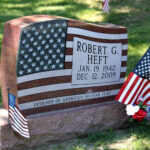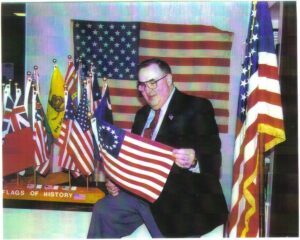
 We have all heard about the importance of thinking ahead. It’s important in many situations, but unfortunately, it isn’t always appreciated. One case of forward thinking that rather backfired is the case of Robert G Heft. Heft, who went by Bob, was in high school in 1958, when his history teacher, Stanley Pratt, asked his class to make anything they wanted and bring it in for a show-and-tell. Heft took a little bit different approach than his classmates, and it rather backfired. While most of his classmates designed a conventional approach for their class project, Heft decided to do something a little more ambitious.
We have all heard about the importance of thinking ahead. It’s important in many situations, but unfortunately, it isn’t always appreciated. One case of forward thinking that rather backfired is the case of Robert G Heft. Heft, who went by Bob, was in high school in 1958, when his history teacher, Stanley Pratt, asked his class to make anything they wanted and bring it in for a show-and-tell. Heft took a little bit different approach than his classmates, and it rather backfired. While most of his classmates designed a conventional approach for their class project, Heft decided to do something a little more ambitious.
It was a noble effort, and definitely forward thinking, but when Heft brought his flag to school, his teacher was not impressed. Years later, Heft recalled, “He told me, ‘Why you got too many stars? You don’t even know how  many states we have.'” Heft received a B- for his project. Nevertheless, he was offered an opportunity to enhance his grade by persuading the US government to adopt his flag design. Despite the slim chances, Heft was determined. He initiated a campaign, writing letters and placing calls to the White House, urging the president to consider his flag.
many states we have.'” Heft received a B- for his project. Nevertheless, he was offered an opportunity to enhance his grade by persuading the US government to adopt his flag design. Despite the slim chances, Heft was determined. He initiated a campaign, writing letters and placing calls to the White House, urging the president to consider his flag.
Two years after Alaska and Hawaii were admitted as states, Heft was surprised with a call from President Dwight D Eisenhower, informing him that his design had been selected for the new 50-star flag. On July 4, 1960, Heft was honored with an invitation from President Eisenhower to attend a flag-raising ceremony at the US Capitol in Washington DC. Even Heft’s history teacher was impressed, saying, “I guess if it’s good enough for Washington, it’s good enough for me. I hereby change the grade to an A.” Well, that took a fair amount of decency on the part of the teacher. He could have let it go, but he didn’t.
Since that time, Heft’s banner has established a new record as the longest-serving U.S. flag. Heft pursued a career as a professor at Northwest State Community College in Archbold, Ohio, and held the position of mayor in Napoleon, Ohio. He gained recognition as a motivational speaker and made 14 visits to the White House. Anticipating future changes, Heft also crafted a 51-star American flag in the event that Washington DC, or Puerto Rico achieves statehood. His 51-star flag design features six alternating rows of stars with nine and 
 eight stars each.
eight stars each.
Heft, born in Saginaw, Michigan on January 19, 1942. He left Michigan following his parents’ separation when he was around a year old. He returned upon retiring from his professorship at Northwest State Community College in Archbold, Ohio. Robert G Heft, who passed away on December 12, 2009, at a hospital in Saginaw, Michigan, at the age of 67, will always be remembered as the student who created the 50-star American flag design.


One Response to Thinking Ahead